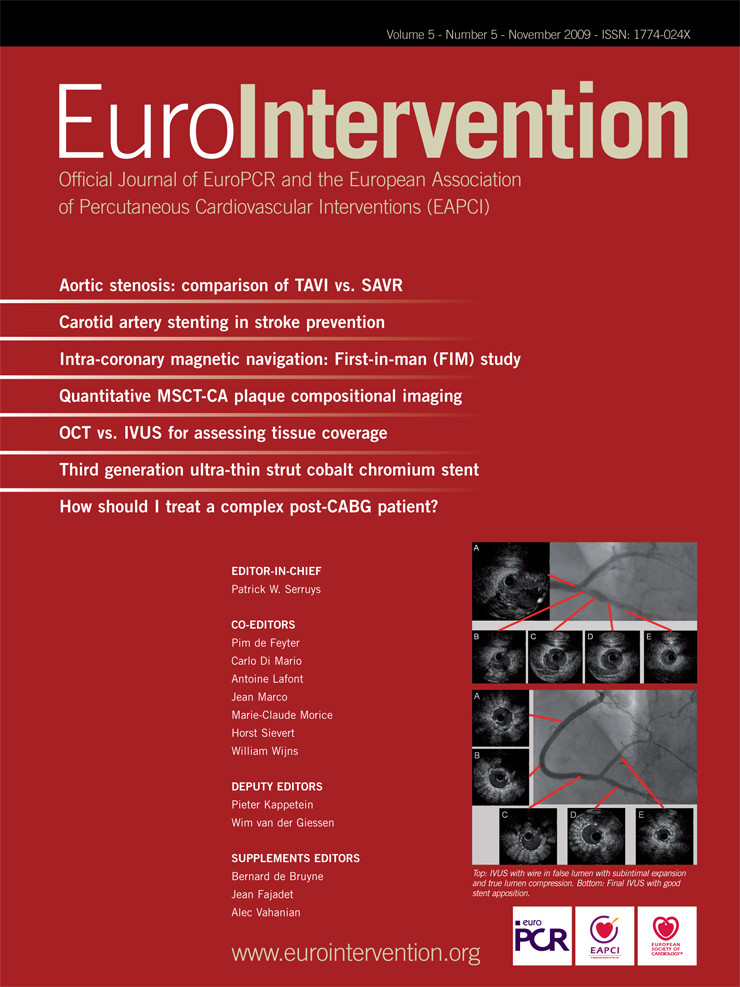Dear Colleagues,
Recently we were in San Francisco, California, struck again by the beauty of its natural setting, the mist and fog rolling in off the Pacific, as we gazed across that world famous Bay. A wonderful environment for a meeting like TCT.
Often in these pages, I have the opportunity to speak about all the good works coming out of our own meeting, EuroPCR, but let’s play fair and be honest and compliment the wonderful work of TCT, with all the organisation and content that created a truly superb medical gathering. There is no doubt for us, or any of the thousands who attended, that this meeting constitutes one of the best “cru” of the last 20 years... 2009 will be a year to be remembered for all of us in interventional cardiology.
In practical terms, we heard that attendance was up by around 20%, with little wonder when you realise the extent, amplitude and variety of the topics covered which were simply mind boggling.
A strong European presence
TCT was a great success, more alive than ever, and from a European perspective it allowed us to spotlight the SYNTAX two year data, as well as further discuss the SYNTAX score itself, along with many of the other derivatives elements of this trial being presented.
The PROSPECT trial – to which Europe is a major contributor – was one of the highlights also, suggesting that, finally, we can begin to clearly make out the light at the end of the tunnel for virtual histology. From this longitudinal trial, some positive and negative predictive values have now emerged which have strong implications for the use of this technique.
Another major new trial, also with strong European participation, was announced during TCT. Besides Europe, North and South
America, as well as Asia will be involved in an attempt to resolve the «taboo» of treatment issues in Left Main disease, testing again the relative value of PCI and surgery in LM.
When “live” is perhaps not enough
As always, “live cases” remain a fascinating and engaging pedagogical part of these meetings, certainly catching the attention of the participants, but I cannot help but think that it puts the operating physician in the role of a gladiator, and while the educational value is present, we, first and foremost, must remember that as physicians the care of our patients is an absolute diktat and always paramount.
Maybe one day, as the technology and spread of our audiovisual resources continues to advance, we will find live cases themselves an archaic part of these meetings; clearly, something like EuroPCR’s Live in-a-box (edited and re-viewable educational videos available online at www.pcronline.com), can – and hopefully will – stimulate others to explore different methods of presenting medical cases and techniques, using a method which can still advance our knowledge, perform an educational role, but without taking unnecessary risks for our patients that the arena of a “live” presentation during an important meeting can sometimes engender.
We “left our hearts”
TCT has captured a great sense of the best of what can be had from “globalisation”, showing us that through our interdependence and collaboration we can advance our work, and improve the care we offer our patients... a fond memory that we took with us, which is more than just a bitter-sweet nostalgia, but a reality, a refreshing thought floating in the mists of San Francisco Bay.

